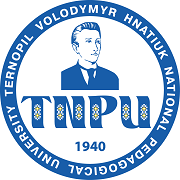TRAVESTIGATION OF GENRE THROUGH THE TITLE IN "DIABOLIC PARABLES" BY PORPHYRIY HOROTAK
Keywords:
genre, genre model, genre canon, title-final complex, literary hoax, travestying, Porphyry HorotakAbstract
The article deals with the problem of correlation of title and genre of a text. The research field includes headlines with a nomination of a particular genre. The subject of research are the texts of the collection "The Diabolic Parables" of the mystical poet Porphyry Horotak. Functional capabilities of titles with genre nomination, their influence on genre reception are analyzed. The complicated relations that emerge between the announced genre and the genre features of the text can be divided into three varieties: travestying of the genre, the "adaptation" to the canons of the genre, and the relations that come close to equivalence. Method of travestying of the genre is realized by parodying and remaking the genre canon. This leads to forming of a particular genre simulacrum. "Adaptation" to the canons of the genre is embodied through ironic pathos, the use of elements of low style in "high" works. Equivalent links between a title containing a genre nomination and a text are rare. This is due to the belonging of the texts of the collection to literary hoax, which facilitates semantic multilayers. In "The Diabolic Parables" the mystified author brings into the title the following nominations of such genres as fugue, ode, elegy, ballad, song, mystery. The intentional inconsistency between grand content and its formal transvestying is intended to convey to the reader the basic semantic dominants of the collection of texts – depicting of mismatch between the mundane, "low" reality and the high, romantic ideals of the lyrical hero.
References
Арнольд, И. Значение сильной позиции для интерпретации художественного текста. «Иностранные языки в школе», 1978, № 4, c. 23–31.
Біляшевич, Р. Поліфонічні форми в українській художній літературі першої половини ХХ ст. «Наукові записки Тернопільського національного педагогічного університету імені Володимира Гнатюка. Сер. Літературознавство», 2013, вип. 38, с. 266−275.
Блисковский, З. Муки заголовка, Москва, 1972.
Грицюк, Л. Образно-семантичний підхід до класифікації заголовків, «Мовознавство» 1992, № 2, с. 51–56.
Иванова, О. Структура полифонической композиции и ее реализация в художественном тексте, «Вестник КемГУКИ. Культурология», 2016, вып. 36, с. 108−114.
Иванова, С. Языковые особенности поэтического заголовка (на материале русского и английского языков): автореф. дис. ... канд. филол. наук, Ульяновск 2006.
Клен Ю. Твори: у 4-х т. Т. 1. Нью-Йорк 1992.
Кожина Н. Заглавие художественного произведения: онтология, функции, пара- метры типологии, в: Проблемы структурной лингвистики: сб. научн. Трудов, Москва 1988, с. 167−183.
Кржижановский, С. Пьеса и ее заглавие. «Новое литературное обозрение: Теория и история литературы, критика и библиография», 2001, № 52, с. 207−208.
Мержвинський, В. Поетика заголовків драматичних творів Лесі Українки. «Слово і час», 2007, № 2, с. 32‒40.
Просалова, В. Текст у світі текстів Празької літературної школи: монографія. Донецьк 2005.
Рижкова, С. Роль та функції заголовку в художніх творах (на матеріалі англійської та німецької художньої літератури), «Науковий вісник Міжнародного гуманітарного університету. Сер. Філологія», 2014, № 10, т. 2, с. 38‒40.
Шкарлута, Т. Містифікація "Порфирій Горотак" в еміграційному літературному процесі 1940-х років. Дис. ... канд. філол. Наук, Київ 2016.










